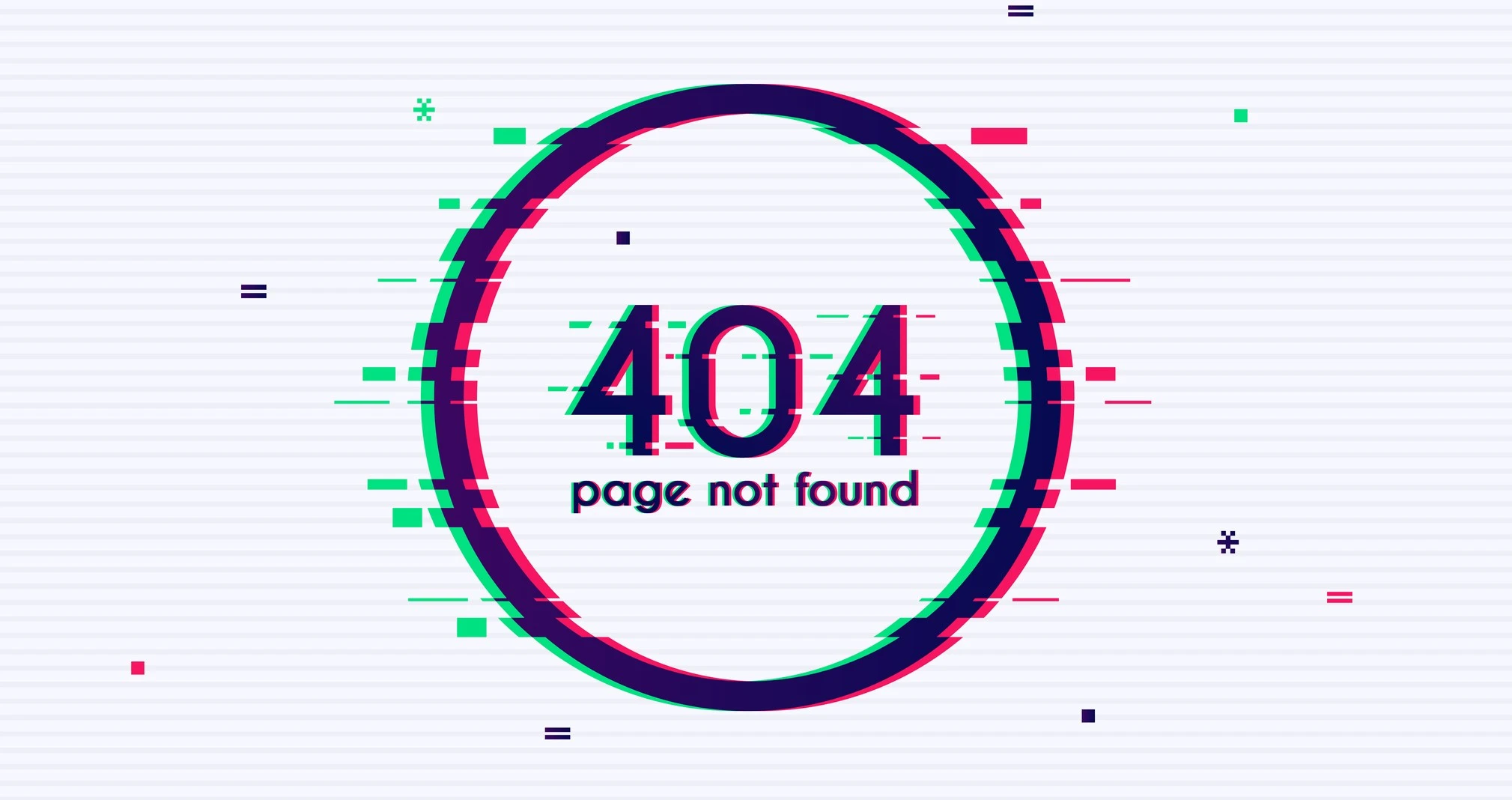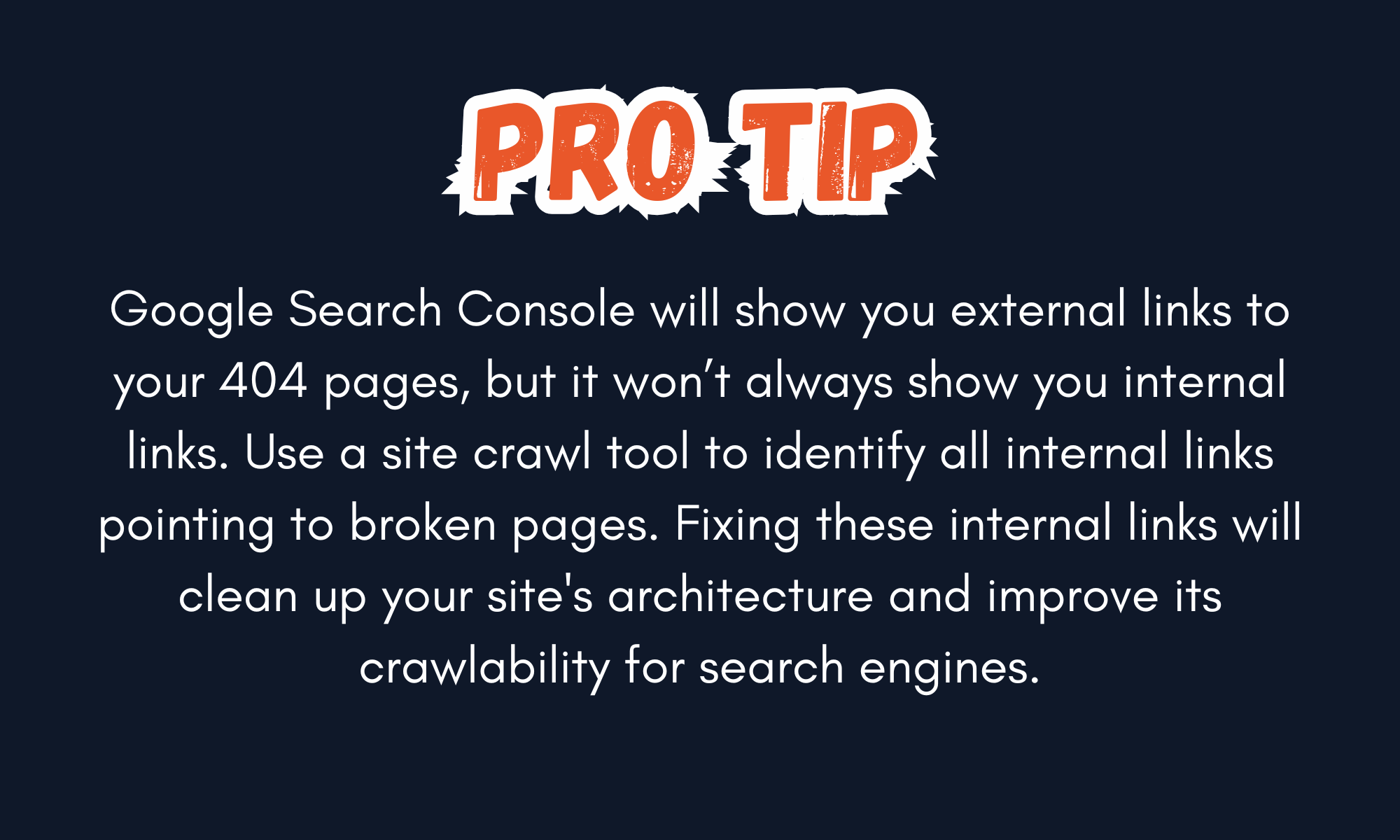How to Turn Your 404 Errors into an SEO Opportunity

It's a frustrating user experience we have all encountered: you click a promising link, only to be met with a stark "404 Page Not Found" message. While many business owners view this as a minor inconvenience, it is actually a significant technical issue that can have a profound negative impact on a website's user experience, search performance, and bottom line. A 404 error is a direct signal that your website is poorly maintained and can be a silent killer of your SEO.
The reality is that these dead ends have a high cost, from frustrating potential customers to wasting valuable crawl budget.
If you're concerned about the number of 404 errors on your site and want to ensure a clean, user-friendly experience, contact us for a free technical audit to find and resolve these issues.

The Problem: The Hidden Damage of 404s
A 404 error is a standard HTTP status code that means a page on your server no longer exists. They can occur for a variety of reasons, from a page being deleted to a typo in a URL. Regardless of the cause, the consequences are damaging:
- Poor User Experience: When a user encounters a 404 page, it creates a sense of frustration and distrust. It breaks their journey, causing them to leave your site and potentially go to a competitor. This leads to a high bounce rate, which is a negative signal to search engines.
- Wasted Crawl Budget: Googlebot is designed to crawl your website efficiently. When it encounters a 404, it has wasted time and resources on a non-existent page. For large or e-commerce sites with thousands of URLs, a high number of 404s can significantly waste your crawl budget, preventing Google from discovering and indexing your new, valuable content.
- Lost Link Equity: One of the most damaging effects of a 404 is the loss of link equity. If an external website links to a page on your site that now returns a 404, all the valuable trust and authority from that backlink are lost. This can directly impact your site's overall ranking and visibility.
.webp)
The Solution: A Strategic Approach to 404 Management
Ignoring 404 errors is not an option. The solution is not to hide them, but to manage them strategically. A professional approach to 404s can not only prevent damage but also reclaim lost authority and improve user experience.
Step 1: Identify and Understand the Problem
The first step is to get a clear picture of which pages are returning a 404. You can't fix what you don't know about. We use tools like Google Search Console's "Not Found" report to identify all crawl errors. This report shows us the pages that Googlebot has tried to access and found to be broken. A professional site audit tool can also help find internal links that are pointing to these dead ends.
Step 2: The Three Strategic Actions
Once you have a list of your 404 errors, you must decide on a course of action for each one. Not every 404 is a simple fix. The correct action depends on the history and purpose of the broken URL.
- Redirect: This is the most common and effective solution for broken pages that have a new, relevant location. If a product page has moved or an old blog post has been updated with a new URL, a 301 permanent redirect should be implemented. This sends both the user and the link equity from the old URL to the new one, seamlessly repairing the break and preserving your SEO value.
- Restore: If a previously popular page was accidentally deleted, or if the content is still relevant, the best action may be to restore the page. By bringing the content back, you restore the user journey and the ranking potential of the URL.
- Custom 404 Page: For URLs that have no logical new destination and were not a significant part of your site's history, a custom 404 page is the best solution. It should be branded and provide helpful links to your homepage, popular articles, or key service pages. This turns a dead end into a helpful guide, ensuring the user stays on your site instead of leaving in frustration.
.webp)
The Appear Online Perspective
Managing 404 errors is a critical part of a comprehensive technical SEO audit. It is a nuanced process that requires expertise to avoid creating redirect loops, which can do more harm than good. At Appear Online, we don't just identify your 404s; we analyse them, categorise them, and provide a strategic plan to fix them. Our goal is to not only clean up your website but also to leverage every opportunity to reclaim lost link equity and improve your site's overall health.
Conclusion: A Clean Site is a Strong Site
The state of your website's 404 errors is a direct reflection of its technical health. A clean site with a strategic approach to broken links sends a powerful positive signal to both Google and your users. By proactively managing 404s, you are not just performing site maintenance; you are improving your user experience, preserving your link equity, and ensuring that every part of your website is working for, not against, your business.
If you are ready to identify and resolve your website's hidden technical issues and ensure a seamless user experience, contact us today to discuss a comprehensive SEO audit.
.webp)
Reference:
https://developers.google.com/search/docs/crawling-indexing/googlebot
https://developers.google.com/search/docs/crawling-indexing/301-redirects
https://support.google.com/webmasters/answer/7440203?hl=en
.avif)








